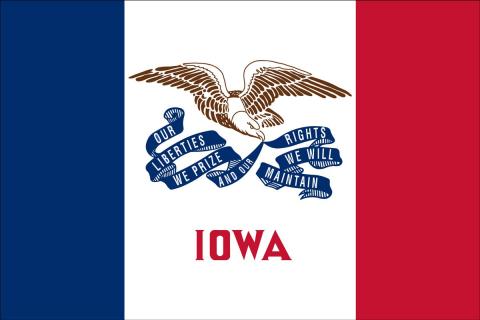Iowa independent voters are watching the nation's politics as closely as the nation watches Iowa to understand political trends.
As goes Iowa, so goes the nation. So they've been saying since at latest 2000, and probably even before that.
One letter to the editor of the New York Times, dated January 28, 2000, noted how remarkably close national presidential vote tallies tracked Iowa's votes in 1992 and 1996:
"In November 1992, Iowa voted: Bill Clinton, 43.3 percent; George Bush, 37.3 percent; Ross Perot, 18.7 percent. In November 1992, the country voted: Mr. Clinton, 43.0 percent; Mr. Bush, 37.4 percent; Mr. Perot, 18.9 percent.In November 1996, Iowa voted: Mr. Clinton, 50.3 percent, Bob Dole, 39.9 percent; Mr. Perot, 8.5 percent. In November 1996, the country voted: Mr. Clinton, 49.2 percent; Mr. Dole, 40.7 percent; Mr. Perot, 8.4 percent."
That's one heck of a bellweather!
No wonder then that Iowa's voter affiliations track rather closely with the nation's as well. According to a Gallup study published in January of this year, the nation's independent voters in 2017 were up to 42 percent of registered voters in 2017, from 39 percent in the preceding year. (We're just getting started.)

Well in Iowa, according to a recent Washington Post report on the role of Iowa independent voters in the IA-1 congressional election, unaffiliated voters make up nearly 40 percent of registered voters in the Hawkeye State. And those voters, especially in Iowa's 1st congressional district, are the key to electoral victory.
In November, voters there will decide between incumbent Rep. Rod Blum (R), who has served two terms in Congress, and as a self-made millionaire who grew up poor, frequently criticizes his colleagues for using taxpayer funded junkets to pay for first class travel and luxury car accommodations on state business.
His challenger, State Rep. Abby Finkenauer (D) brings the same populist message to IA-1's blue-collar voters, saying she wants to represent hard-working Iowans who want, "enough money at the end of the week to send their kids to baseball and softball practice and buy a case of beer."
"Of the 20 counties in Iowa’s 1st District, 15 moved from Obama to Trump. More than 200 of these 'pivot counties' exist nationwide, but they are heavily concentrated in the Upper Midwest. Political strategists are watching voters in these counties for clues about how they might vote in future elections and what messages from candidates they will find most compelling.To attract those elusive voters, Blum and Finkenauer are operating from different perspectives to focus on the same themes: economic issues such as higher wages and cheaper health care, and what they contend is their personal distance from party leaders and Washington politics."
A picture is worth a thousand words.
Here are two pictures–
IA-1:

Iowa Pivot Counties:

Independent voters clearly have a lot of power as partisan candidates make every effort to court and pander to them, but it's telling that there are no independent candidates in IA-1, just a Green Party candidate whose website acknowledges he's not even Constitutionally eligible for the office because of his age.
If independent voters want power and influence that accords with their numbers in America's voter registries, some of them, the most well-credentialed and successful in some important aspect of the economy, and able to put together an articulate and relevant platform, are going to have to become independent candidates. Otherwise there will be more and more pivot counties, switching back and forth between two parties that say whatever they have to for independent votes, and then continue to make partisan policy.
Iowa independent voters will decide whether Republicans or Democrats win IA-1 in 2018. Pivot counties are a good first step on the ascent to political enlightenment. First voters tire of their party. Then they will tire of playing both parties against each other. Then they will start electing candidates who refuse to caucus with or take money from the corrupt party duopoly. And then we will be able to start the difficult process of having a real conversation. And there will still be a long way for us to go.
This is only the beginning of the beginning.
